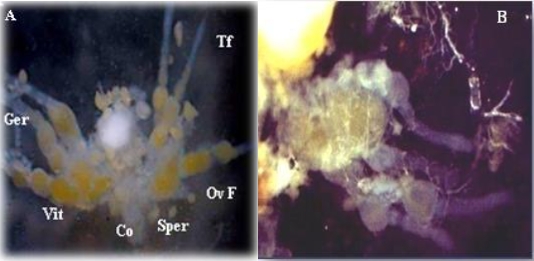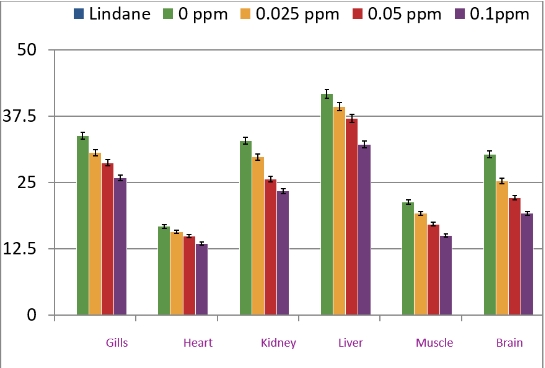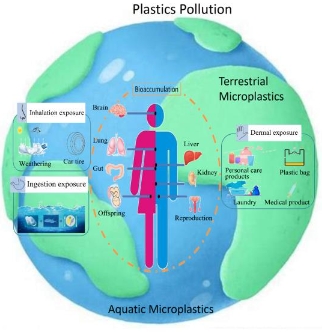Deciphering the mechanisms of carcinogens: Unravelling the pathways of cancer initiation and progression: An insight into DNA damage, genotoxicity, and epigenetic changes
Abstract
Carcinogens are substances known to induce cancer by altering the genetic material and cellular processes within the human body. Understanding the mode of action of carcinogens is critical for developing effective prevention and intervention strategies against cancer. Cancer remains a significant global health challenge, with carcinogens posing a continuous threat to human well-being. This study explores the intricate mechanisms by which carcinogens induce cancer, focusing on the interplay of DNA damage, genotoxicity, and epigenetic alterations. Through an analysis of direct and indirect-acting carcinogens, the study elucidates how these agents disrupt cellular DNA, leading to mutations and chromosomal abnormalities. Additionally, the role of genotoxicity in driving oncogenesis is explored, highlighting the importance of assessing carcinogenic risk through cytogenetic genotoxicity methods. The study focused on the direct and indirect DNA damage, genotoxicity, epigenetic changes, inflammation, hormonal effects, and immune system suppression induced by different carcinogens. It intends insight on the intricate interplay between environmental factors and the molecular foundation of carcinogenesis by thoroughly investigating these pathways. By comprehensively examining these pathways, which hope to focus on the complex interplay of carcinogenesis. By understanding these mechanisms, this study aims to inform preventive strategies and therapeutic interventions, ultimately mitigating the global burden of cancer.
References
[1]Nohmi T. Thresholds of Genotoxic and Non-Genotoxic Carcinogens. Toxicological Research. 2018; 34(4): 281-290. doi: 10.5487/tr.2018.34.4.281
[2]ICH Harmonised Tripartite Guideline. Assessment and control of DNA reactive (mutagenic) impurities in pharmaceuticals to limit potential carcinogenic risk. PMDA. Available online: https://www.pmda.go.jp/files/000208234.pdf (accessed on 25 May 2024).
[3]Ren N, Atyah M, Chen WY, et al. The various aspects of genetic and epigenetic toxicology: Testing methods and clinical applications. Journal of Translational Medicine. 2017; 15(1). doi: 10.1186/s12967-017-1218-4
[4]Luch A. Molecular, Clinical and Environmental Toxicology. Birkhäuser Basel; 2009.
[5]Móricz ÁM, Ott PG. Effects-directed detection: Cell-based assays. In: Poole CF (editor). Instrumental Thin-Layer Chromatography. Elsevier; 2023. pp. 259-296. doi: 10.1016/b978-0-323-99970-0.00012-0
[6]Piña B, Barata C. Ecotoxicology, Genetic. In: Wexler P (editor). Encyclopedia of Toxicology. Academic Press; 2014. pp. 295-300. doi: 10.1016/b978-0-12-386454-3.00497-8
[7]Csaba G. Transgenerational effects of perinatal hormonal imprinting. In: Tollefsbol T (editor). Transgenerational Epigenetics. Academic Press; 2014. pp. 255-267. doi: 10.1016/B978-0-12-405944-3.00019-2
[8]Lyon. Chemical agents and related occupations. Available online: https://www.ncbi.nlm.nih.gov/books/NBK304415/ (accessed on 25 May 2024).
[9]NIH (National Cancer Institute). NCI dictionary of cancer terms. Available online: https://www.cancer.gov/publications/dictionaries/cancer-terms/def/benzoapyrene (accessed on 25 May 2024).
[10]IARC. BENZO[a]PYRENE monographs. Available online: https://monographs.iarc.who.int/wp-content/uploads/2018/06/mono100F-14.pdf (accessed on 25 May 2024).
[11]Pogribny IP. Environmental exposures and epigenetic perturbations. Available online: https://www.sciencedirect.com/science/article/pii/B9780128012383650626 (accessed on 25 May 2024).
[12]Murray JR, Penning TM. Carcinogenic polycyclic aromatic hydrocarbons. In: McQueen CA (editor). Comprehensive Toxicology, 3rd ed. Elsevier Science; 2018. Volume 7. pp. 87-153. doi: 10.1016/b978-0-12-801238-3.95691-5
[13]Maron DM, Ames BN. Revised methods for the Salmonella mutagenicity test. Mutation Research/Environmental Mutagenesis and Related Subjects. 1983; 113(3-4): 173-215. doi: 10.1016/0165-1161(83)90010-9
[14]Suzuki Y, Umemura T, Hibi D, et al. Possible involvement of genotoxic mechanisms in estragole-induced hepatocarcinogenesis in rats. Archives of Toxicology. 2012; 86(10): 1593-1601. doi: 10.1007/s00204-012-0865-8
[15]Jin M, Kijima A, Hibi D, et al. In Vivo Genotoxicity of Methyleugenol in gpt Delta Transgenic Rats Following Medium-Term Exposure. Toxicological Sciences. 2012; 131(2): 387-394. doi: 10.1093/toxsci/kfs294
[16]Kuroda K, Ishii Y, Takasu S, et al. Cell cycle progression, but not genotoxic activity, mainly contributes to citrinin-induced renal carcinogenesis. Toxicology. 2013; 311(3): 216-224. doi: 10.1016/j.tox.2013.07.003
[17]Kuroiwa Y, Umemura T, Nishikawa A, et al. Lack of in vivo mutagenicity and oxidative DNA damage by flumequine in the livers of gpt delta mice. Archives of Toxicology. 2006; 81(1): 63-69. doi: 10.1007/s00204-006-0126-9
Copyright (c) 2024 Saurabh Dilip Bhandare

This work is licensed under a Creative Commons Attribution 4.0 International License.








